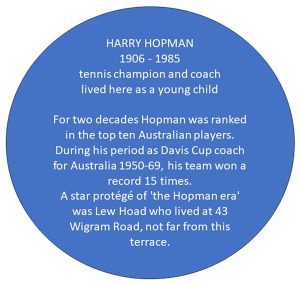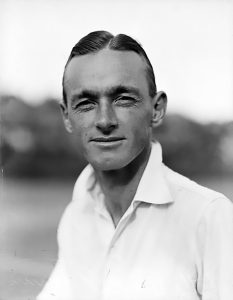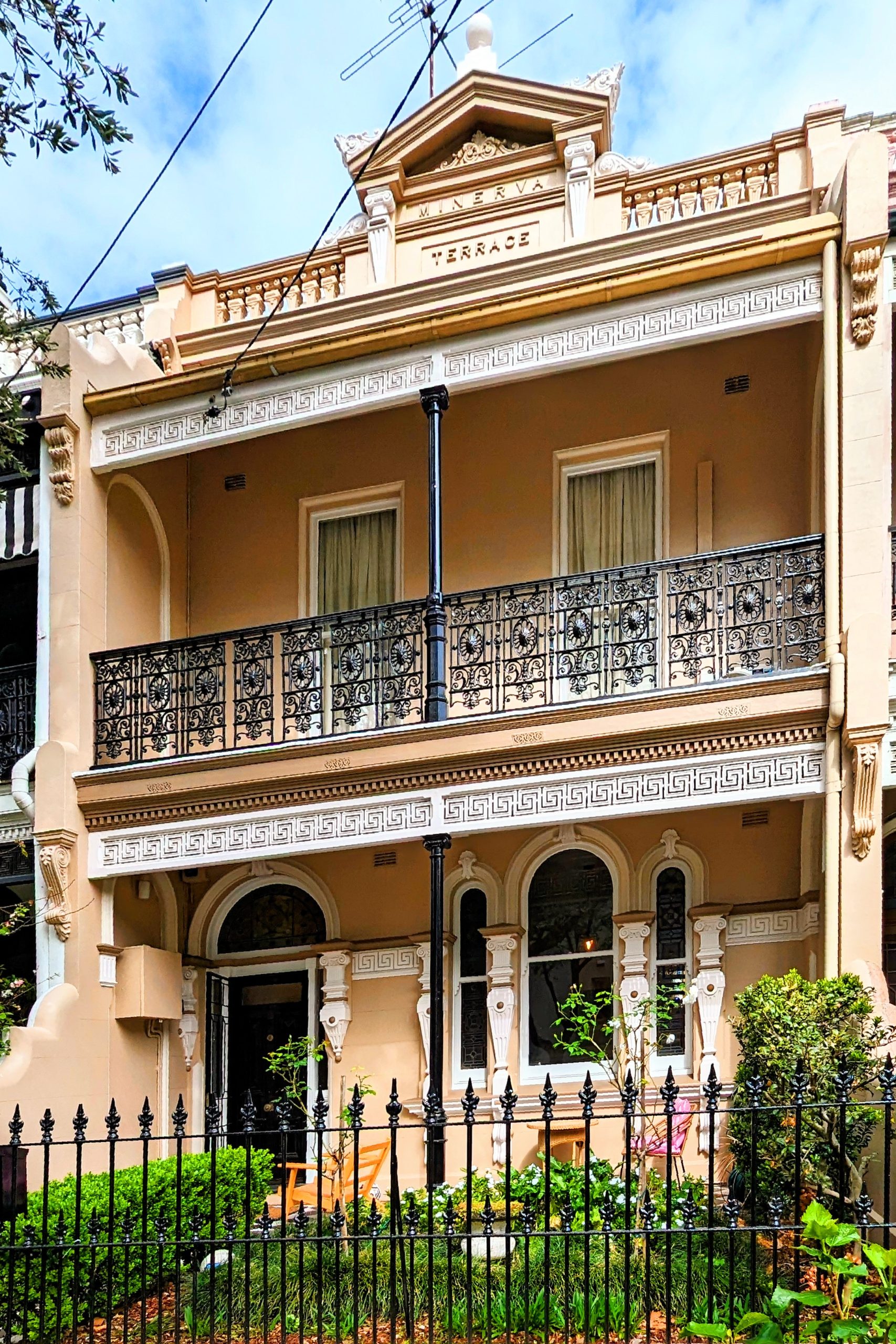 By Ian Stephenson and Lyn Collingwood, from Bulletin 8/2023, October
By Ian Stephenson and Lyn Collingwood, from Bulletin 8/2023, October
The 18th site nominated for a Blue Plaque in 2021 is Minerva Terrace on Wigram Road where internationally-acclaimed tennis player and coach Henry (‘Harry’) Christian Hopman (1906-1985) lived briefly as a child. Harry was the son of a teacher who was posted from one public school to another so Harry and his family were constantly on the move.
At age 13, after switching allegiance from soccer to tennis, Hopman won his first open singles tournament, playing barefoot and shirtless on a makeshift court in a school playground. In 1923 he won the NSW High Schools’ singles championship. After leaving school, Hopman worked as a salesman for a Sydney sports goods retailer who allowed him time to play and practise.

In 1925 Hopman teamed up with Jack Crawford, and they won – for three years in a row – the Australian junior doubles championship, and then the Australian senior doubles championships (1929, 1930). In 1933 Hopman joined the staff of the Melbourne Herald as a sportswriter. The next year he married Eleanor Hall with whom he won the Australian mixed doubles four times.
Hopman was the successful captain-coach of 22 Australian Davis Cup teams from 1939 to 1967. As architect of Australia’s post-war tennis supremacy, his stint as non-playing captain-coach became known as ‘the Hopman era’ during which he won the Davis Cup 15 times. He quickly brought in replacements for young champions who disqualified themselves from the competition by turning professional. Hopman was appointed OBE (1951) and CBE (1956) and the Hopman Cup was named in his honour. In 1978 he was inducted into the International Tennis Hall of Fame in Newport, Rhode Island.

One of Hopman’s star protégés was Lew Hoad (1934-1994) who was a member of the Australian team which won the Davis Cup four times. Born and raised at 43 Wigram Road, he was allowed time off from Glebe Public School to practise what his schoolmates labelled a sissy game. Ranked world number one amateur in 1956 and in the top ten 1952-1957, after which he turned professional, Hoad won two Wimbledon Championships, the Australian Open, French Open, Italian Open, Kooyong Tournament of Champions, Forest Hills Tournament of Champions and Ampol Open Trophy.
Both Hopman and Hoad were household names during Australia’s golden age of tennis. Although there is a Lewis Hoad Reserve on Minogue Crescent, he warrants a sentence on Hopman’s plaque.











There are no comments yet. Please leave yours.